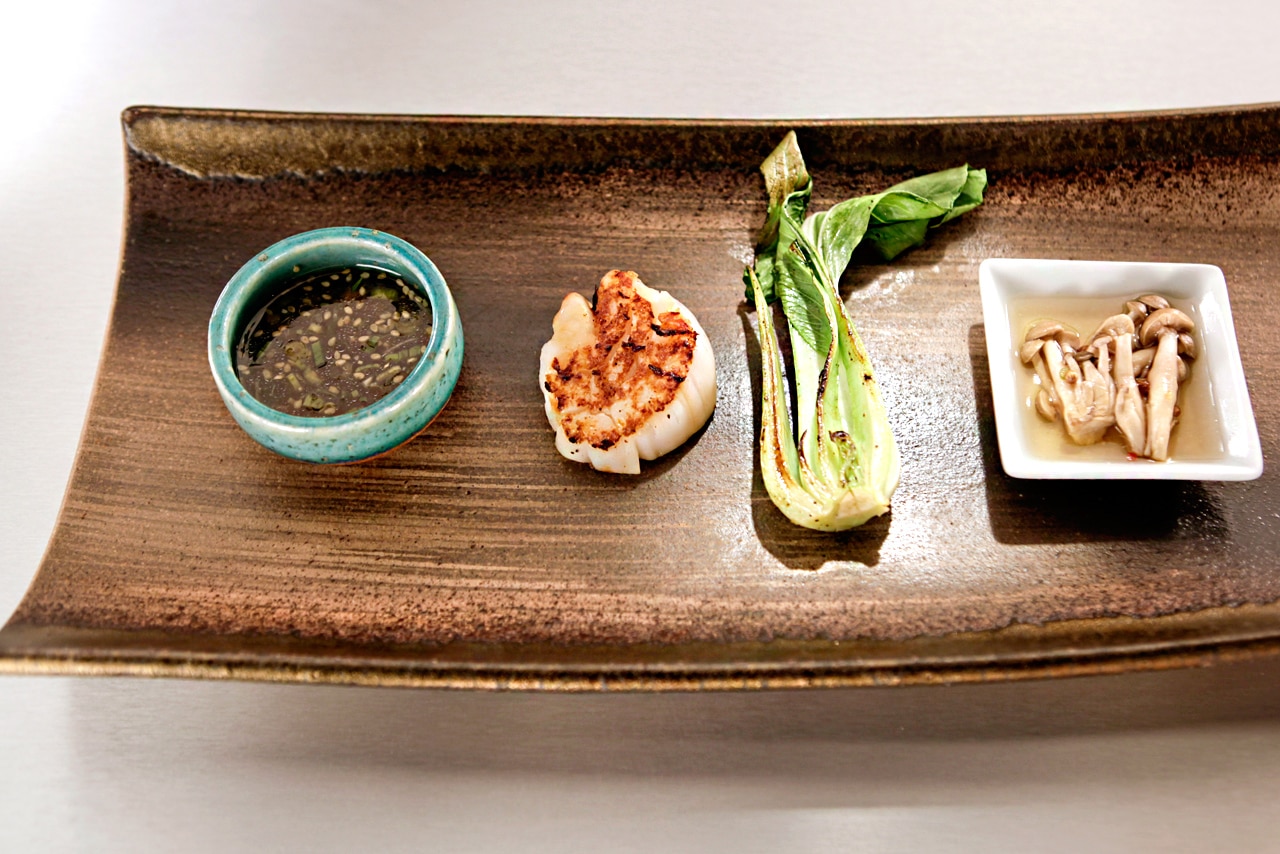Out of the Comfort Zone
James Oseland explains why this week's challeng was, in fact, such a challenge.

The ultimate birthday meal for me when I was growing up was a trip to Benihana, the great Japanese-American chain restaurant that introduced tableside teppanyaki cooking to America. To this day, that style of cooking strikes a deep chord for me: the sheer kinetic energy of the chef, the thrill as a diner of being so close to the physicality of the act of cooking. A teppanyaki restaurant turns the normal dining model on its head: Normally, cooking takes place behind closed doorseven in so-called "open kitchen" restaurants, or restaurants where you dine at a kitchen bar, it's rare that chefs work while looking the diner in the eye. But with teppanyaki everything is stripped bare, and the very process of cooking is as important to the dining experience as the food itself.
It's a lot harder than it looks, though. The teppanyaki is a finicky heat source, like a standard restaurant griddle station taken to extremes: it's blazingly hot in the center while the edges are relatively cool. As a result, the types of dishes you can use it for (and the quantity in which you can make those dishes) is fairly finite.
Which brings us to tonight's episode: add to that the fact that the chefs didn't just have to cook for their diners but perform for them, and teppanyaki-style cooking becomes a true exercise in leaving your comfort zone. The chefs were handicapped by time (ten minutes at a cooktop is barely anything), unfamiliarity with the grill, and for some of them, simple stage fright.
All the challenges on Top Chef Masters expose vulnerabilities and strengths in the contestants, and the chefs who shine are often those you wouldn't necessarily expect to. This week's challenge was all about stripping away crutches: there was no hiding behind baked goods and butter sauces. The ones who rose to the top, particularly Chris, Art, Takashi, and Lorena, understood and embraced the form they were given to work in. They used the teppanyaki to make foods that made sense for the cooking surface, and pared the architecture of their dishes down to a place that allowed them to use their time wisely while still interacting with their audience of diners.
Art's winning dish may have lacked beauty -- those poor grits cakes completely disintegrated -- but what it lacked in aesthetic appeal it made up with truly delicious flavor. Add to that Art's own very personality, his warm humor, and his surprising facility with large bursts of controlled flame, and it was the full teppanyaki package.
On the other side we had Mark, whose ambitiously minimal dish of scallops, a piece of bok choy, and a bit of pickled mushroom fell flat. He was also very nervous, working slowly and quietly; what was edited in the show to a few seconds of sizzling scallop was, for us, a good while longer of silently watching him cook. That lack of showmanship could have been redeemed by a strong plate of food, but unfortunately what he produced didn't deliver. The bok choy was raw inside and faintly charred outside, and the scallops were cooked unevenly.
I'm going to miss Mark. He's a smart, hilarious guy, and boy, can he cook. But one things for sure: I'm certainly not going to miss him as much as Clark is!



